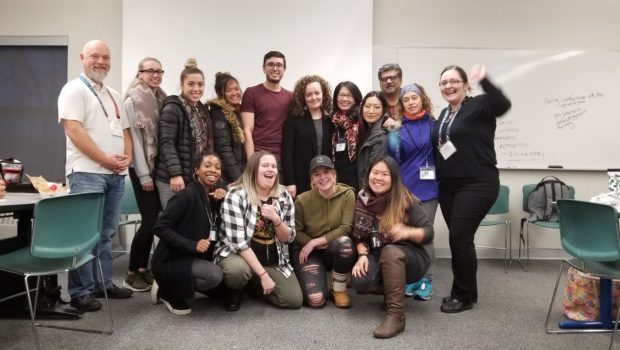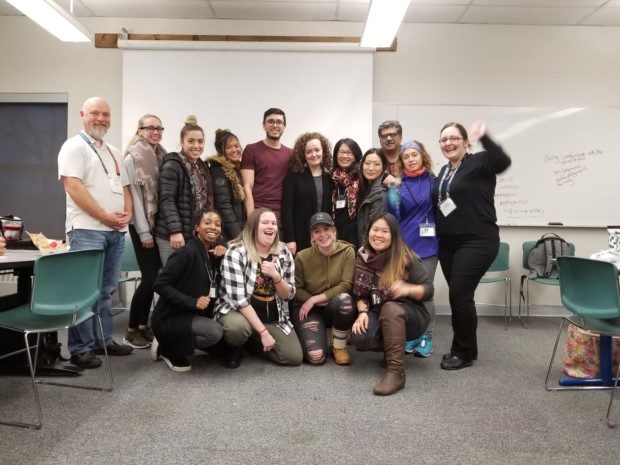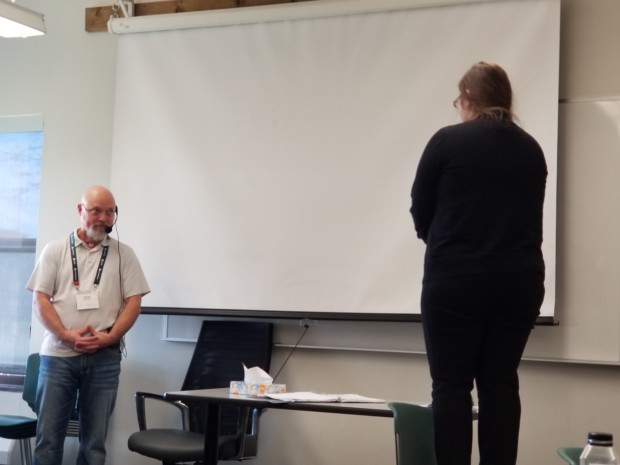

Suicide prevention workshop puts self-care before intervention.
EtobicokeHealthHumberLifestyle Nov 6, 2018 Clement Goh

Clement Goh
Skedline Reporter
The idea of self-care comes from working in crisis, with a risk of burnout coming from an overexposure to situations. For child abuse investigation and placement coordinator Paula Cordeiro, helpers have to be able to maintain themselves before preventing suicide.
“I think that for people who are mental health service providers, it is significant for anyone in that position to practice ongoing self-care,” said Cordeiro.
“It’s a huge responsibility based on us as caregivers so we need to be mindful of our own – practicing our boundaries, practicing appropriate methods of self-care because in order to take care of others, we also need to take care of ourselves and reaching out for support is a huge part of that process“ she said.
Over a weekend, these concepts were shared through the Applied Suicide Intervention Skills Training (ASIST) Workshop. Introduced in 1983, the program turns its research into strategies to help break the stigmas and fear surrounding suicide and give people the tools needed to prevent others from ending their life.
ASIST lead instructor Brad Hutchinson is a counsellor at The Gatehouse, providing to people in crisis in the Etobicoke community. Like Cordeiro, he’s also a former student in Humber’s Police Foundations program.
Instructor Brad Hutchinson demonstrates approaching a situation of suicide. The two-day A.S.I.S.T. workshop employs role-playing, putting students in the shoes of helpers in situations (Clement Goh/Skedline).Hutchinson says he finds it interesting the turnaround people make in their approach to dealing with suicide prevention after the two-day workshop.
“It’s always satisfying to see people make it through the whole two days, and be ready, willing and able to deal with this idea of suicide,” Hutchinson said. “to feel less afraid and to move through some of the obstacles that may have prevented them from actually sitting down with somebody thinking about suicide”
Listening plays a large part in training. One lesson includes a need to pay attention to yourself before intervening.
Instructors connected with 14 trainers by hearing their personal experiences. By doing this, the topic of suicide is normalized and open for discussion.
“Because you guys (students) have been trained in suicide intervention skills – does not mean that you have to do an intervention if it doesn’t feel right to you. We’re all human beings. We all have our emotional things going on, we all have stuff,” Hutchinson said.
“Your personal wellbeing – health and wellness – is really important. It’s paramount to this whole thing. If you feel unsafe in a situation or if you feel like you can’t do this right now, you’re not obligated to do that now. Because often times, that can be more harmful than good,” he said.
Another important step in suicide intervention is being able to develop a rapport. The person thinking about ending their life shows an effort to find a reason to live by reaching out to a helper.
Suicide prevention fosters the brainstorming process towards a “SafePlan”, the point where a person agrees to stay alive.
The SafePlan takes people in crisis away from danger. Intervention reinforces a person’s other values in life and renews a motivation to find support.
If you have thoughts of suicide, self-harm or an intervention, you can contact Humber Lakeshore Student Services at (416)-675-6622 x3331 and The Lifeline at (416) 408-4357.
The Gatehouse also gives visitations behind the campus at 3101 Lake Shore Blvd. W. Calls can also be made for their peer support at 416-255-5900 x222.

